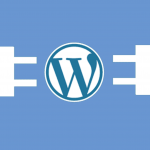What should a good website have? There are a lot of answers to this question, from image styles and good typography to SEO and well-placed hyperlinks. Good website design incorporates a wide variety of concepts, and the tools to implement the components of a good website are myriad. But even if you’re new to the field, you can still create stunning websites that will keep your users and clients returning. Here are seven elements of successful web design.
It’s Beautiful
This is your first priority – creating a beautiful and visually engaging website. Use beautiful and readable fonts, make use of your whitespace, choose well-placed and pleasing images, and avoid cluttering things up too much. Make sure to use high-quality images and fonts, and that your site is optimized for viewing on both computers and mobile devices. If you’ve cultivated photography as a secondary skill, creating beautiful images will be a snap – if not, invest in some high-quality stock images.
It’s Easy to Read
Readability is a concept that is surprisingly undervalued in web design. It’s totally acceptable to be a typography buff that enjoys all sorts of strange and unusual fonts, but typography is as much a science as an art, and you should use it to maximum efficacy. Think carefully about font type and size, embellishments, and how typography can add to the functionality of your sites, such as using a different font from the main body fonts for hotlinks or section labeling.
The Message is Clear
Whether you communicate your main message through imagery, typography, or a combination of both, it should be immediately clear what your website is for. Make sure the most immediately relevant information is on your homepage. If visitors have to comb to find the information they’re looking for, they’re not going to stick around. The most important facts should be immediately accessible.
Info is Easily Accessible
Your website should be carefully organized so that people accessing it can find information quickly and easily. Your contact page shouldn’t feature an “About Me” section, and your portfolio section should be just that. Keep things tight and trim, don’t overwhelm the user with too much, and make sure everything relevant to each section is kept organized and neat. Your navigation menu should be easily seen and just as easily accessed.
It’s Interesting
To be blunt: if your website is boring, no one will want to visit it. Keeping things interesting certainly falls in line with making your website beautiful, but you can also make it look unique. Choose interesting and quirky images, unusual but still readable fonts, and so on. However, beware of confusing interesting with complex – your website should still be tight and trim, and not overly complicated – or your users won’t spend any time on it.
It Utilizes SEO
Search engine optimization is key to keeping your website relevant. Make sure to include relevant keywords and location tagging – without “keyword stuffing” – into the text of your website in order to boost your website’s presence in searches. People reading your website will also register the keywords to know exactly what it is you’re about, so it’s a worthy investment – if you don’t do SEO yourself – to pay for SEO services, even once.
It Uses Hero Images
Hero images are large header images that visually engage the user and encourage them to continue reading or viewing. If you’ve looked at anyone’s Facebook page, you’ve seen a hero image in the form of a cover photo. Hero images often have text overlay to give some indication of what the page, section, or article is about. Make sure your hero images are large, beautiful and responsive, and that they can be viewed on multiple devices.
Final Thought
To build a well-established and modernized brand, aside from an impactful logo for your brand, a well-designed website is a must. Good website design can take a long time to perfect, but the essential rules almost always remain the same. By utilizing these seven concepts across every area of your website design, you will help your company become and stay relevant in a crowded marketplace. Designing an effective website is not simply a nicety – it is an essential tool to your company’s long-term success and prosperity.



